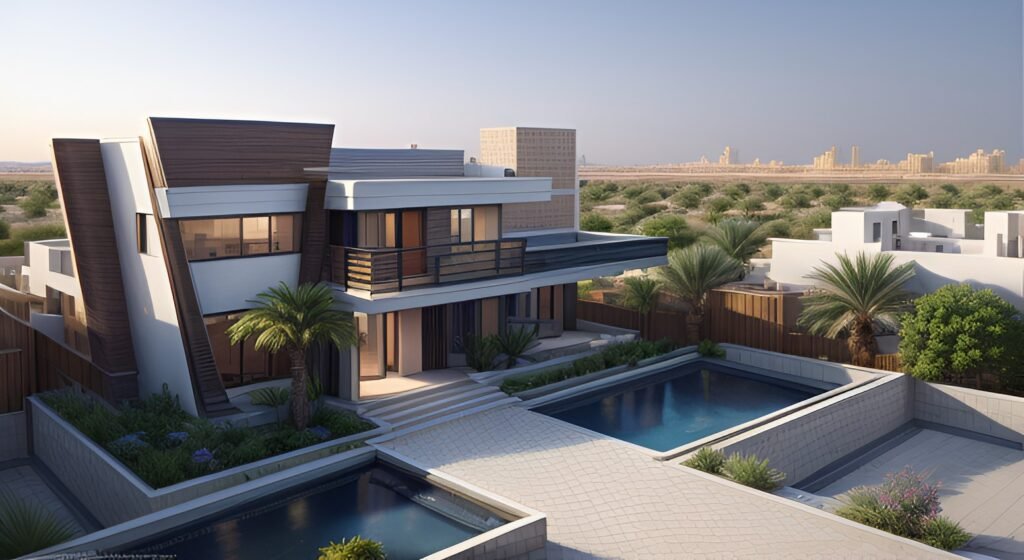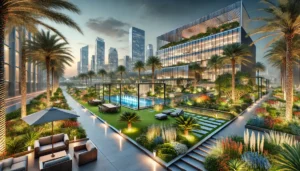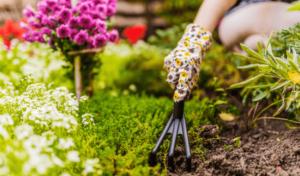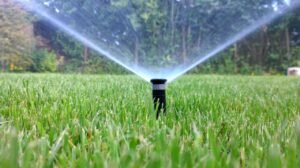Introduction
Dubai, known for its modern architecture, luxurious lifestyle, and innovative developments, is a city that continuously pushes the boundaries of design and creativity. Landscaping for new properties in Dubai presents unique opportunities and challenges due to the city’s climate, cultural influences, and urban environment. This comprehensive guide will explore various aspects of landscaping in Dubai, including planning, design, plant selection, irrigation, and maintenance.
1. Planning Your Landscape
1.1 Understanding the Climate
Dubai has a hot desert climate characterized by extremely high temperatures, especially during the summer months, and very little rainfall. Understanding the climate is crucial for successful landscaping. Key climatic factors to consider include:
– Temperature: Summer temperatures can exceed 40°C (104°F), while winter temperatures are milder, ranging between 14°C (57°F) and 25°C (77°F).
– Rainfall: Dubai receives minimal rainfall, averaging around 100mm (4 inches) per year, primarily during the winter months.
– Humidity: The humidity levels can vary significantly, with higher humidity near the coast and lower levels inland.
1.2 Defining Your Vision and Goals
Before starting your landscaping project, it’s essential to define your vision and goals. Consider the following questions:
– What is the primary purpose of the landscape? (e.g., relaxation, entertainment, aesthetics)
– What style do you prefer? (e.g., modern, traditional, tropical)
– Are there specific features you want to include? (e.g., swimming pool, outdoor kitchen, garden, seating areas)
– What is your budget?
1.3 Site Analysis
Conduct a thorough site analysis to understand the existing conditions and constraints of your property. Key aspects to examine include:
– Soil Type: Determine the soil type and quality. Dubai’s soil is typically sandy, which affects water retention and plant selection.
– Topography: Assess the slope and elevation of the site. Proper grading is essential for drainage and preventing waterlogging.
– Sun Exposure: Identify areas with full sun, partial shade, and full shade to select appropriate plants and features.
– Wind Patterns: Consider prevailing wind directions to protect plants and structures from wind damage.
1.4 Creating a Master Plan
A master plan serves as a blueprint for your landscaping project. It should include:
– Layout: Detailed drawings of the layout, including hardscape and softscape elements.
– Zoning: Division of the landscape into functional zones (e.g., entertainment area, garden, pool area).
– Planting Plan: A list of selected plants and their placement.
– Irrigation Plan: Design of the irrigation system to ensure efficient water use.
– Lighting Plan: Placement of outdoor lighting for aesthetics and safety.
2. Landscape Design Principles
2.1 Balance and Symmetry
Achieving balance and symmetry in your landscape design creates a sense of harmony and order. There are two types of balance:
– Formal Balance: Symmetrical design where both sides of the landscape are mirror images.
– Informal Balance: Asymmetrical design where elements are balanced through visual weight rather than strict symmetry.
2.2 Unity and Cohesion
Unity involves creating a cohesive look by using consistent design elements, such as color schemes, materials, and plant types. Cohesion ensures that all parts of the landscape work together to create a unified whole.
2.3 Focal Points
Focal points draw attention to specific areas of the landscape. These can include:
– Water Features: Fountains, ponds, or waterfalls.
– Sculptures and Art: Unique sculptures or art pieces.
– Specimen Plants: Unusual or striking plants.
2.4 Proportion and Scale
Proportion and scale ensure that the elements of the landscape are in harmony with each other and the surrounding environment. Consider the size of plants, structures, and features in relation to the property size.
2.5 Color and Texture
Color and texture add visual interest and depth to the landscape. Use a mix of:
– Colors: Harmonious color schemes or contrasting colors for vibrancy.
– Textures: Varied plant textures (e.g., smooth leaves, rough bark) and hardscape materials (e.g., stone, wood).
3. Plant Selection for Dubai’s Climate
3.1 Native and Drought-Tolerant Plants
Selecting plants that thrive in Dubai’s climate is crucial for a sustainable landscape. Native and drought-tolerant plants are well-suited to the environment. Some examples include:
– Palm Trees: Date palms (Phoenix dactylifera), Washingtonia palms (Washingtonia filifera), and Canary Island date palms (Phoenix canariensis).
– Desert Shrubs: Oleander (Nerium oleander), Bougainvillea (Bougainvillea spp.), and Plumbago (Plumbago auriculata).
– Succulents and Cacti: Agave (Agave spp.), Aloe Vera (Aloe vera), and Prickly Pear (Opuntia spp.).
3.2 Ornamental Grasses
Ornamental grasses add texture and movement to the landscape. They are generally low-maintenance and drought-tolerant. Examples include:
– Fountain Grass (Pennisetum setaceum)
– Muhly Grass (Muhlenbergia capillaris)
– Blue Fescue (Festuca glauca)
3.3 Flowering Plants
Adding flowering plants provides color and seasonal interest. Choose species that can withstand the heat and require minimal water. Examples include:
– Lantana (Lantana camara)
– Desert Rose (Adenium obesum)
– Portulaca (Portulaca grandiflora)
3.4 Ground Covers
Ground covers help reduce soil erosion, retain moisture, and suppress weeds. Suitable options for Dubai include:
– Ice Plant (Delosperma spp.)
– Gazania (Gazania rigens)
– Dwarf Carpet of Stars (Ruschia lineolata)
4. Hardscape Elements
4.1 Pathways and Walkways
Pathways and walkways provide structure and guide movement through the landscape. Consider using materials that complement the overall design, such as:
– Pavers: Concrete, stone, or brick pavers.
– Gravel: Pea gravel or crushed stone.
– Stepping Stones: Natural stone or concrete stepping stones.
4.2 Patios and Seating Areas
Creating outdoor living spaces, such as patios and seating areas, enhances the usability of your landscape. Popular materials include:
– Concrete: Durable and versatile, available in various finishes.
– Wood: Natural and warm, suitable for decking and pergolas.
– Stone: Elegant and timeless, ideal for high-end designs.
4.3 Water Features
Water features add a sense of tranquility and can serve as focal points. Options include:
– Fountains: Various styles, from traditional to contemporary.
– Ponds: Natural or formal designs, with or without fish.
– Waterfalls: Integrated into rock formations or as standalone features.
4.4 Outdoor Lighting
Outdoor lighting extends the usability of your landscape into the evening and enhances safety and security. Consider:
– Path Lights: Illuminating walkways and pathways.
– Spotlights: Highlighting focal points and architectural features.
– String Lights: Creating a festive and cozy atmosphere.
4.5 Outdoor Structures
Outdoor structures provide shade, shelter, and aesthetic appeal. Common structures include:
– Pergolas: Open-roof structures that provide partial shade.
– Gazebos: Freestanding structures with a solid roof, ideal for seating areas.
– Arbors: Arch-like structures often used to support climbing plants.
5. Irrigation Systems
5.1 Drip Irrigation
Drip irrigation is an efficient method for delivering water directly to the roots of plants, minimizing water waste. Benefits include:
– Water Efficiency: Reduces evaporation and runoff.
– Targeted Watering: Ensures each plant receives the necessary amount of water.
– Soil Moisture Maintenance: Maintains consistent soil moisture levels.
5.2 Sprinkler Systems
Sprinkler systems are suitable for larger lawns and garden areas. Types of sprinklers include:
– Pop-up Sprinklers: Retract when not in use, ideal for lawns.
– Rotary Sprinklers: Cover larger areas with a rotating spray.
– Fixed Sprinklers: Provide a consistent spray pattern.
5.3 Smart Irrigation Controllers
Smart irrigation controllers use weather data and soil moisture sensors to optimize watering schedules. Advantages include:
– Water Conservation: Adjusts watering based on real-time conditions.
– Convenience: Allows remote control via smartphone apps.
– Cost Savings: Reduces water bills through efficient water use.
6. Maintenance Practices
6.1 Watering
Proper watering is crucial for plant health. General guidelines include:
– Early Morning Watering: Reduces evaporation and allows plants to absorb water before the heat of the day.
– Deep Watering: Encourages deep root growth and improves drought tolerance.
– Adjusting Frequency: Varies based on plant type, weather, and season.
6.2 Pruning and Trimming
Regular pruning and trimming maintain plant health and aesthetics. Key practices include:
– Removing Dead or Diseased Branches: Prevents the spread of disease and promotes new growth.
– Shaping Plants: Maintains desired shapes and sizes.
– Seasonal Pruning: Tailors pruning to the growth cycles of specific plants.
6.3 Fertilizing
Fertilizing provides essential nutrients for plant growth.
Consider:
– Organic Fertilizers: Derived from natural sources, such as compost or manure.
– Inorganic Fertilizers: Synthetic formulations that provide specific nutrient ratios.
– Application Timing: Based on plant needs and growth stages.
6.4 Pest and Disease Management
Effective pest and disease management protects plant health. Strategies include:
– Integrated Pest Management (IPM): Combines biological, cultural, and chemical methods.
– Regular Inspections: Early detection of pests and diseases.
– Natural Predators: Encouraging beneficial insects that control pests.
6.5 Mulching
Mulching conserves soil moisture, suppresses weeds, and improves soil health. Types of mulch include:
– Organic Mulch: Wood chips, bark, straw, or compost.
– Inorganic Mulch: Gravel, stones, or synthetic materials.
Conclusion
Landscaping for new properties in Dubai requires careful planning, thoughtful design, and an understanding of the unique climatic conditions. By selecting appropriate plants, incorporating effective irrigation systems, and maintaining your landscape diligently, you can create a beautiful and sustainable outdoor space that enhances your property’s value and your quality of life. Whether you aim for a modern, minimalist design or a lush, tropical oasis, the principles and practices outlined in this guide will help you achieve your landscaping goals in Dubai’s vibrant and dynamic environment.




